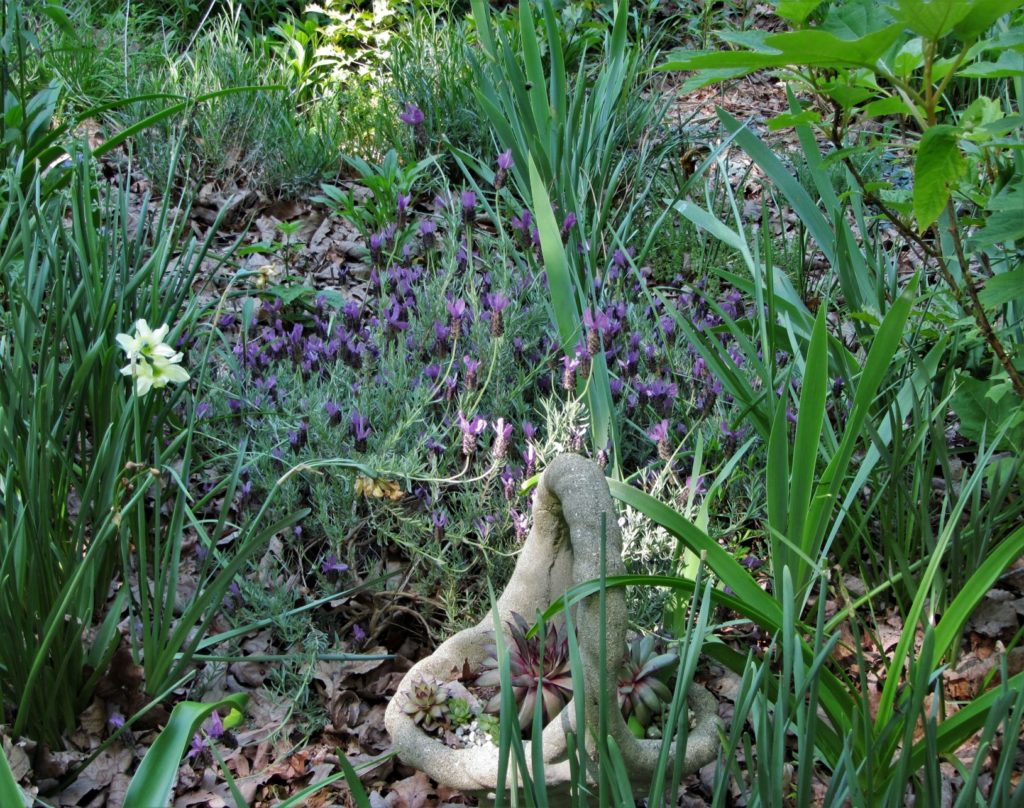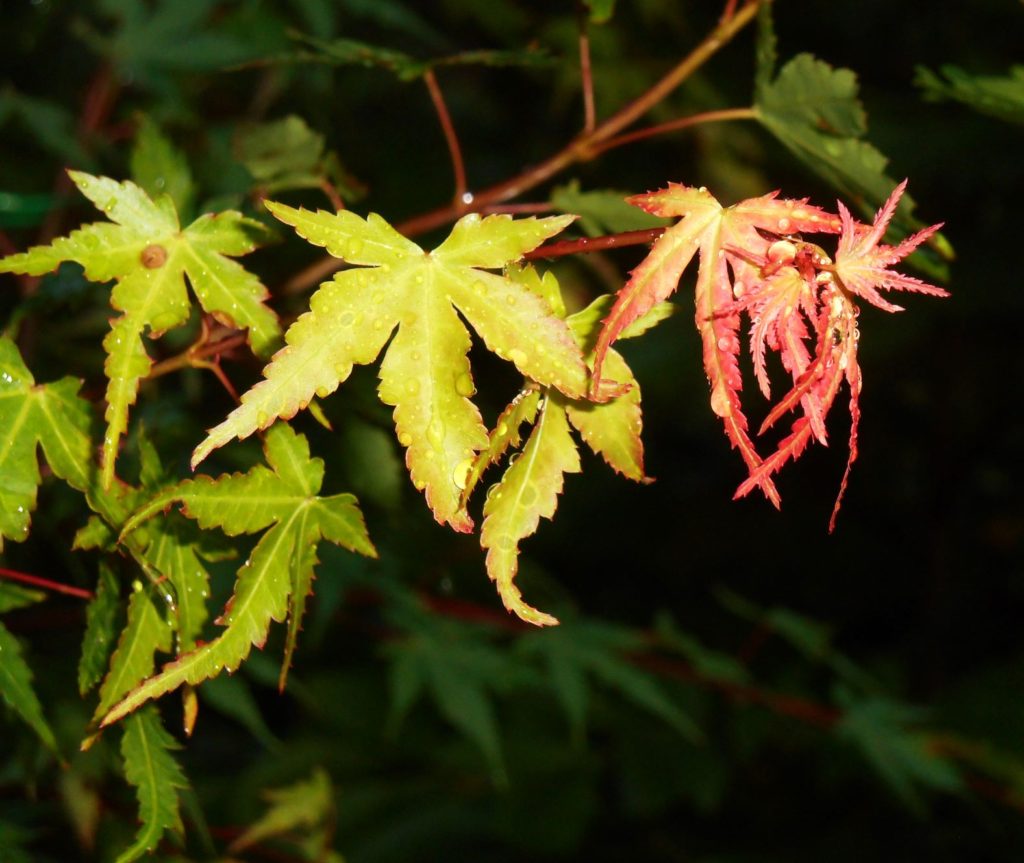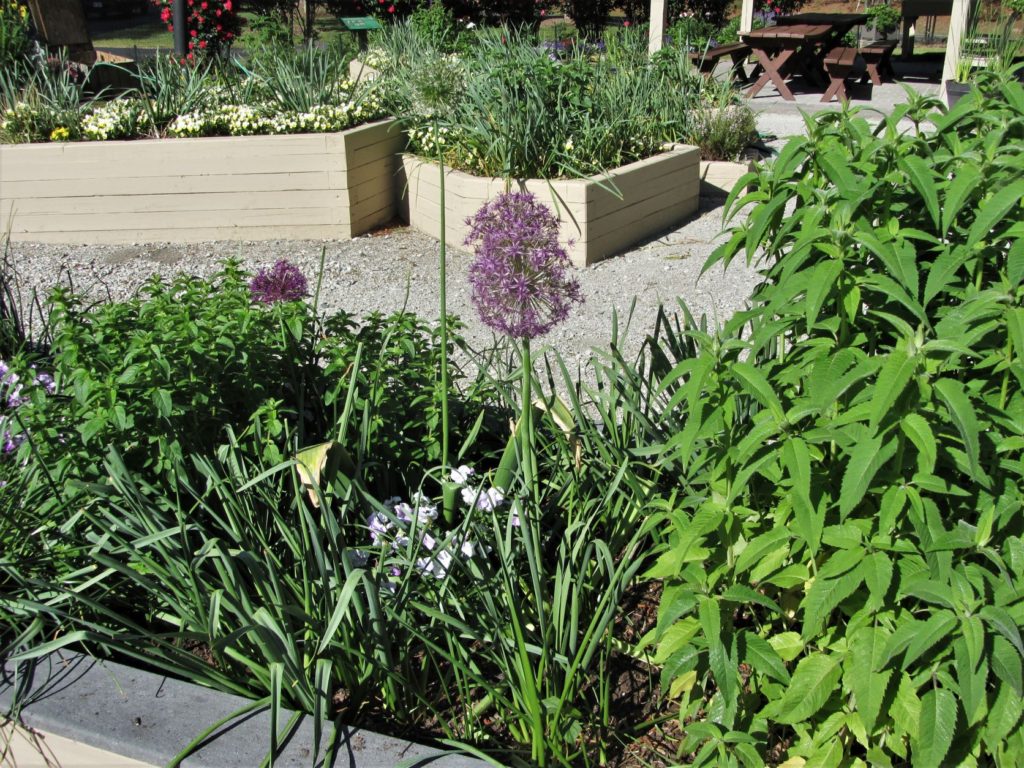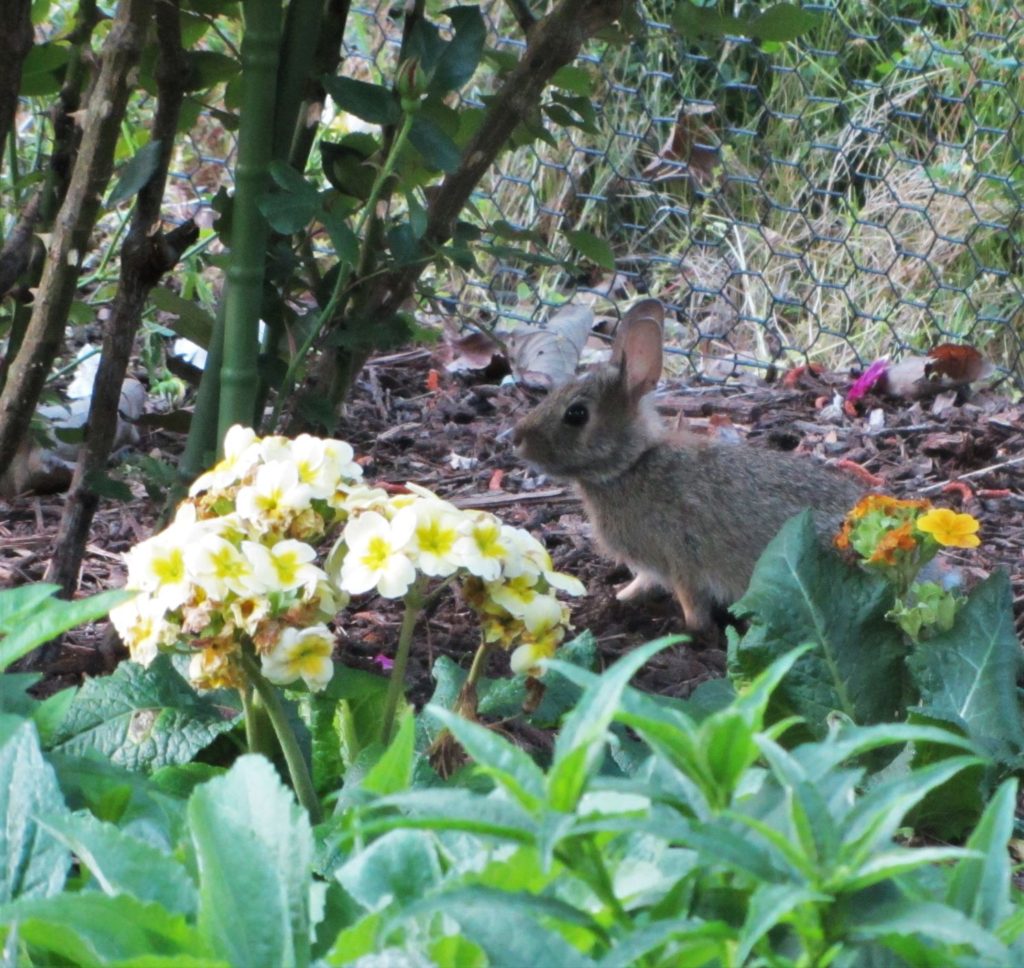But Will Deer Eat It?
by Elizabeth McCoy · Published · Updated
The lady checking out in front of me at the garden center had two cute little pots of 'polka dot plant,' Hypoestes phyllostachya, and she had a single question for the clerk: "Will deer eat it?" For those of us living among free-roaming herds of deer, that is always the question!
Do deer graze in your garden? It seems that ever-growing herds of deer continue moving into more and more areas across the United States. Even suburbs and small towns now have a problem with deer. So many are born each year, and they have no natural predators. There is no longer enough hunting to keep their population in check, and so they have learned to live among us.
Maybe you, like some of our neighbors, enjoy seeing 'the Bambies.' But maybe you, like many of our friends, want to grow a garden around your home to please you and your family- not to offer a free dinner to the local herd.
It is a constant struggle here, in our forested community. Each doe can have up to five fawns a year. Triplets are not uncommon. Each buck may have a harem of six or more does in his family group. We saw a group of more than 20 running across our neighbor's yard one day in late January.
Even if you are content to let nature take its course in your yard, and you aren't an avid gardener; you may be concerned about deer ticks and the diseases they carry. Ticks lurk in places frequented by deer. They wait on grasses, shrubs, anywhere they can until a warm blooded comes near enough for them to jump on and catch a ride and a meal.
The last time we were at the doctor getting an antibiotic script for a tick bite, the doctor offered up some comforting news. She told us that the tick must be attached for 24 hours to transmit Lyme's disease. That is reason enough to thoroughly check for ticks after a day of gardening!
We have so many friends who have contracted Lyme's disease, and we have had so many tick bites ourselves, that we do everything in our power to keep deer out of our yard.
And that is not an easy thing. Unless you are ready to construct a 10' high chain-link fence around the perimeter of your yard, maybe adding a little razor wire on top, they will likely find a way in from time to time.

Every part of a Narcissus is highly poisonous, so they will never be eaten by deer. Herbs, like this Spanish lavender, have an unappealing fragrance and texture that deer avoid.
This brings us back to buying 'deer resistant' plants. The garden center clerk didn't know whether polka dot plant was deer resistant or not. But she looked it up somehow in her system and told her customer that she believed it was. She was right. Hypoestes is considered deer resistant.
But ‘deer resistant’ is a very loose term. When hungry enough, deer will try grazing many things they shouldn't.
We have had to learn a lot about what deer won't eat in order to garden in our community. My last garden was enclosed with a 7' fence in a suburb that had no deer. My azaleas were tall and lush, and I could grow anything I wanted without a second thought. Even our present neighborhood suffers more deer pressure than it did before nearby development sent deer looking for new places to live. But the past is the past, and we live in the present, right?
Unless you have an eidetic memory, it might be easier to remember some basic principles about which plants deer avoid than trying to memorize a list of deer-proof plants. I have read lots of lists over the years and listened to a few experts speak on the topic. No one is 100% accurate, in part because deer develop different preferences based on available food sources. As you may have heard, the deer forgot to read the memo, and ate that ‘deer resistant plant’ anyway!

Mountain Laurel, a Virginia native shrub that blooms in May, is highly poisonous. Grow it with confidence that deer won't damage it..
But here are a few guidelines that might prove useful as you plan your garden. In general, the same principles apply to other herbivores, such as rabbits:
- Deer don't like strongly scented or strongly flavored foliage. This means that almost any herb is 'safe' and won't be grazed. This includes plants you might not think of as herbs, including annual geraniums, scented geraniums, Artemisias, and some perennials related to the mint family. All Alliums, including garlic, chives, scallions, and onions, repel deer.
- Deer don't like thick, tough, and textured leaves. Your Yucca is safe, as is prickly pear cactus, Iris and Lantana. I've never seen lamb's ears, Stachys byzantina, grazed by deer, either.
- Many plants are naturally poisonous, and others have calcium oxalate crystals in their leaves, which burn and irritate the tissue in deer’s mouths. Many different types of plants have these irritating crystals in their tissue. Colocasia and Alocasia, Arum italicum, and Zantedeschia all fall into this group. If a plant is known as poisonous, like Helleborus and Narcissus, you can plant it with confidence.
- Deer avoid eating ferns.
- Deer avoid grey foliage.

Zantedeschia, calla lily, grows with scented Pelargonium. The scent and texture of the Pelargonium protect it from grazing, and the Calla lily is poisonous to eat.
Now, here is what they do enjoy eating:
- Any new shrub from the nursery, which has been grown with lots of fertilizer, looks delicious! Even a shrub they wouldn't think of grazing when it is mature will be tasty when young. Nitrogen, a salt, makes the foliage taste good. Think of salt on French fries..... Give those newly planted shrubs and trees a bit of extra protection until they are at least 2 years old.
- Any plant you might eat, especially in your vegetable garden, will attract deer. We have had fruit trees grazed, tomatoes devastated, bean vines harvested, and lettuce made to disappear in the blink of an eye.
- Any tender, soft, succulent, beautiful leaf, like a Hosta, Heuchera, Coleus, or Hydrangea, will interest a deer. Even the thick leaves of Sedums and other succulent plants may be eaten. They also like flowers, otherwise known as 'deer candy.' You wouldn't think deer would graze roses, but they do. They adore eating any lily, especially daylily leaves and flowers.

Tender new growth on trees and shrubs, like on this Japanese maple, may be grazed if not protected from deer.
What can you do? Like the lady with the polka dot plant, consider whether or not a new plant will attract deer before you bring it home to your garden. Let the majority of your new plants be those the deer won't graze. I have learned how to create an interesting garden by growing lots of herbs and poisonous plants!
But I grow my favorites, too. We gave up on a veggie garden, but we still have roses, a few Hosta, and Hydrangeas. I defiantly grow a few tasty annuals in pots and baskets out of the reach of deer, or in pots right up against the house. You would be amazed how brazen hungry deer can be! And yes, I have had sweet potato vines and Coleus plants eaten off my front patio.
If you can’t have a tall fence around your yard, perhaps you can have a thick hedge. Thick shrubs and trees, especially those that don’t interest deer, can hide some of your tasty treasures and make it more difficult to get into your yard.
But deer have keen noses and can smell those plants they prefer to eat. I often surround tender tasty plants with highly scented ones the deer will avoid. We grow garlic, chives, and onions in random places to protect certain plants. Highly scented herbs can often give some protection, too, if planted around plants you want to protect. I throw garlic cloves in pots of annuals.

Alliums, and fragrant herbs, will often protect nearby tasty plants from grazers. This bed is at the Williamsburg Botanical Garden, where hungry bunnies sometimes climb into raised beds to feed.
We also regularly spread an organic fertilizer called Milorganite around the perimeter of our property and around shrubs, like azaleas, we want to protect from deer. You need at least a 4' swath of this smelly fertilizer to fend off deer because they avoid walking through it. An interesting benefit is a drastic reduction in ticks we've found since we began using Milorganite. We have also had noticeably larger and more abundant flowers on our flowering shrubs protected with Milorganite.
I keep a spray bottle of 'Repels-All' and spray the Hosta and Heuchera as they emerge; the roses and Hydrangeas as they leaf out. Rain washes this product away, eventually, and so one needs to use it every few weeks. Plants are more vulnerable in spring than in late summer, so you don't have to make a lifetime commitment to spraying repellents.
There are many recipes available for making your own repellents using combinations of hot peppers, spoiled eggs, blood meal, and other substances. Fish or seaweed emulsion, diluted and used as a foliar feed, will also provide some protection between rain showers.

Rabbits and deer prove resourceful in finding their way through fences and accessing the choicest plants they want to sample.
Granular Plant Skydd lasts for up to 45 days and repels a variety of animals, including rabbits. Use it in pots, raised beds, and borders. Rain will intensify the effect rather than washing it away.
No one of us can solve the deer problem alone. Hunting remains very controversial. There are few ideas out there for a humane solution to this growing problem. As undeveloped habitat disappears deer move into our neighborhoods, sharing the land with us. And so, it is up to us, as the brainier species, to adapt. One way to co-exist with these gentle creatures is to design our gardens with plants they won't eat. "Let them eat elsewhere!" becomes our motto, and constant vigilance our practice.



